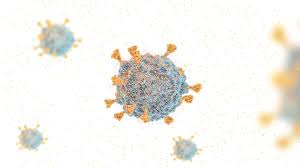How can this new crisis in 2020 be tackled?

How does it differ from the SARS epidemic in 2003? Many countries have relied on an extrapolation of classic infection-control and public-health measures to contain the COVID-19 pandemic, similar to those used for SARS in 2003. These range from extreme quarantine measures in China (e.g., locking down over 60 million people in Hubei province) to painstakingly detailed contact tracing with hundreds of contact tracers (e.g., Singapore, Hong Kong, South Korea). However, these measures may not be effective in 2020 for tackling the scale of COVID-19. Could new digital technology be used for COVID-19?
Although the focus of tackling the direct impact of COVID-19 is essential, in many healthcare settings, it is necessary to maintain core and critical clinical service. The initial reaction in many countries is for healthcare facilities to reduce or even cease many clinical services, including the closure of clinics and postponement of medical appointments or elective surgeries. However, such strategies cannot be sustained indefinitely if the COVID-19 pandemic extends beyond six months.
How Digital technologies, Monitoring, surveillance has helped in the detection and prevention of COVID-19.

First.
These provide a platform that allows public-health agencies access to data for monitoring the COVID-19 pandemic. For example, the ‘World meter’ provides a real-time update on the actual number of people known to have COVID-19 worldwide, including daily new cases of the disease, disease distribution by countries and severity of illness (recovered, critical condition.
Johns Hopkins University’s Centre for Systems Science and Engineering has also developed a real-time tracking map for following cases of COVID-19 across the world, using the data collected from US Centres for Disease Control and Prevention (CDC), the World Health Organization (WHO), the European Centre for Disease Prevention and Control, the Chinese Centre for Disease Control and Prevention (China CDC) and the Chinese website DXY, which aggregates data from China’s National Health Commission and the China CDC.
Secondly,
Big data also provides opportunities for performing modelling studies of viral activity and for guiding the individual country, healthcare policymakers to enhance the preparation of the outbreak. Using three global databases, the Official Aviation Guide, the location-based services of the Tencent (Shenzhen, China), and the Wuhan Municipal Transportation Management Bureau―Wu et al. they performed a modelled study of ‘nowcasting’ and forecasting of COVID-19 disease activity within and outside China that could be used by the health authorities for public health planning and control worldwide. Similarly, using the WHO International Health Regulations, the State Parties Self-Assessment Annual Reporting Tool, Joint External Evaluation reports and the Infectious Disease Vulnerability Index, Gilbert et al. assessed the preparedness and vulnerability of African countries in battling against COVID-19; this would help raise awareness of the respective health authorities in Africa to better prepare for the viral outbreak.

Thirdly,
Digital technology can enhance public-health education and communication. In Singapore, the government has partnered with WhatsApp (owned by Face book) to allow the public to receive accurate information about COVID-19 and government initiatives. Multiple social media platforms (e.g., Face book and Twitter) are currently used by healthcare agencies to provide ‘real-time’ updates and clarify uncertainties with the public. Additionally, some facial-recognition companies (e.g., Sense Time and Sunell) have adopted the thermal imaging–enabled facial recognition to identify people with an elevated temperature.
Fourthly,
AI and deep learning can enhance the detection and diagnosis of COVID-19. The need to provide access to accurate and low-cost tests for the determination of COVID-19 is a challenge. Many peripheral hospitals in China and other developing countries in Asia, the Middle-East and Africa do not have the tests or resources to distinguish COVID-19 from the ‘common flu accurately’. In Indonesia, which has only two reported case thus far, despite substantial exposure to Chinese tourists (Bali had 1.2 million Chinese tourists in 2019), health authorities decided against testing the 243 returning but asymptomatic citizens from Wuhan because of cost of the test (the reagent was quoted as costing nearly US$75,000). Alternative diagnostic and screening tests for COVID-19 will be beneficial. In this context, China has large datasets of cases positive for COVID-19 (>70,000 cases). These are ideal datasets for deep AI and deep learning. Such AI algorithms can then be used as a primary screening tool for suspected instances (e.g., travel history to China, Iran or South Korea, or exposure to confirmed cases) so that patients at higher risk could have confirmatory laboratory-based tests or be isolated.
Although most patients have mild cases of COVID-19, physicians have to apply the same level of intensive methods to isolate, treat and monitor all patients. AI algorithms can be developed to help physicians triage patients with COVID-19 into potentially three groups: the 80% who have mild disease; the 15% who have moderate disease; and the 5% who have a severe illness, including those at high risk of mortality. Finally, AI can also facilitate the discovery of novel drugs with which to treat COVID-19.
Fifth,
Healthcare systems should plan to use digital technology. For example, ‘virtual clinics’ could be set up using telemedicine consultations with imaging data (e.g., chest X-ray and CT of the thorax) uploaded from external sites and interpreted remotely. It would ensure that patients continue to receive standard clinical care while reducing physical crowding of patients into hospital premises. For other key hospital activities (e.g., research and education), virtual e-learning platforms are increasingly being explored to eliminate physical meetings.
Sixth,
The utilization of various AI-based triage systems could potentially alleviate the clinical load of physicians. An online medical ‘chatbot’ could help patients recognize early symptoms, educate people on the importance of hand hygiene and refer people for medical treatment should symptoms worsen. Additionally, phone-based software that detects and records patients’ data (e.g., daily temperature and symptoms) may prevent unnecessary hospital consultations for patients with mild flu-like symptoms. These data could also be developed into AI algorithms for the detection of COVID-19.
Seventh, Many hospitals in China are collaborating with block-chain companies and pharmacies to deliver patients’ medication to their doorsteps. Using block-chain, hospitals could ensure timely delivery of medicines with accurate tracking. In summary, while the world continues to rely on classic public-health measures for tackling the COVID-19 pandemic, in 2020, there is now a wide range of digital technology that can be used to augment and enhance these public-health strategies.
written by B.ADEBANJO





